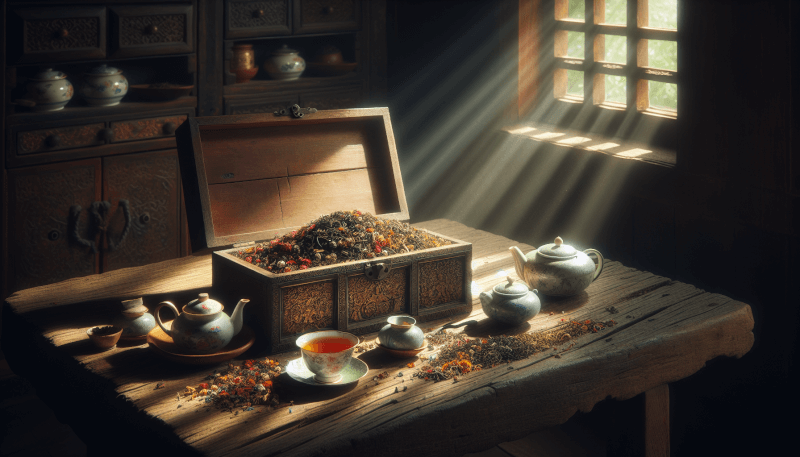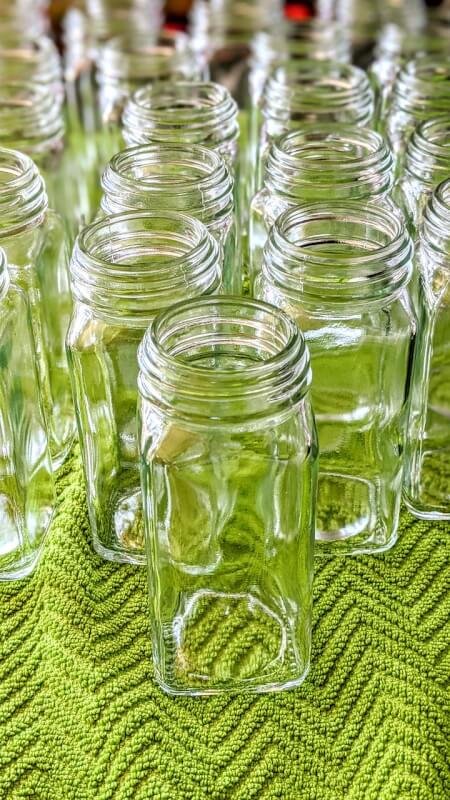Tea lovers rejoice! If you’ve ever wondered how to keep your prized tea leaves fresh and flavorful for the perfect brew, look no further. In this article, you’ll discover the ultimate guide on how to properly store tea for brewing. From the importance of airtight containers to ideal storage conditions, we’ve got you covered. So grab a cup of your favorite blend, and let’s dive into the world of tea storage secrets!
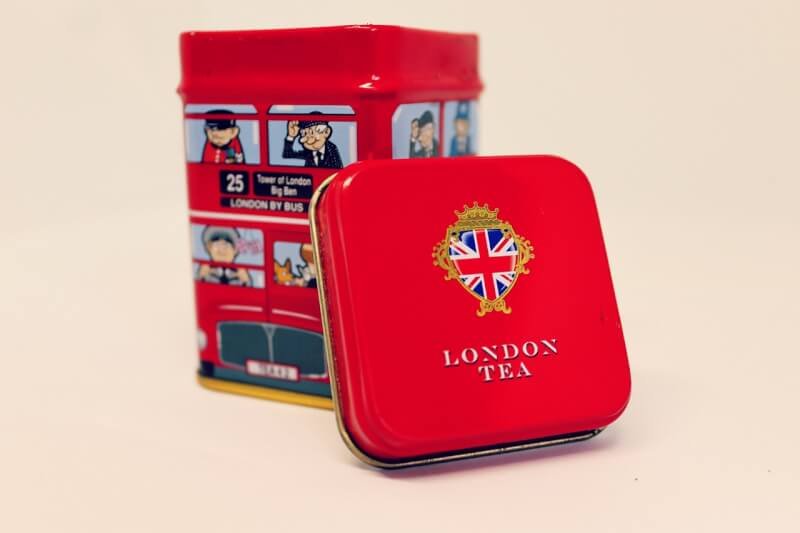
Understanding the Importance of Properly Storing Tea
Properly storing tea is crucial for maintaining its quality and flavor. The way tea is stored can significantly impact its taste, aroma, and overall enjoyment. By understanding the importance of proper storage, you can ensure that each cup of tea you brew is a delightful experience.
The Impact of Storage on Tea Quality
Tea is a delicate beverage that can easily absorb odors and flavors from its surroundings. Improper storage can result in the tea losing its natural taste and becoming stale. Factors such as temperature, humidity, light exposure, and air circulation all play a role in determining the quality of stored tea. When tea is stored incorrectly, it can lose its freshness and vibrant flavors.
Factors Affecting Tea Storage
Several factors affect the storage of tea, and each type of tea may have specific requirements. Some of the key factors include the material of the container, the size of the container, and the airtightness of the container. Additionally, the storage conditions such as temperature, humidity, light exposure, and odor control need to be carefully considered.
Choosing the Right Container for Tea Storage
When it comes to choosing the right container for storing tea, there are a few important factors to consider.
Material of the Container
The material of the container is an essential consideration for tea storage. It is recommended to choose containers made of non-porous materials such as glass, ceramic, or metal. These materials help to maintain the freshness of the tea and prevent the absorption of external odors.
Size of the Container
The size of the container should be chosen based on the amount of tea you plan to store. It is important to select a container that allows enough space for the tea leaves to move freely. This helps to prevent tea leaves from becoming crushed or damaged.
Airtightness of the Container
An airtight container is crucial for preserving the freshness and flavor of tea. Tea absorbs moisture and can easily become stale if exposed to air. Ensure that the container you choose has a tight-fitting lid or seal to prevent air from entering.
Ideal Storage Conditions for Tea
Creating the ideal storage conditions is essential for preserving the quality of tea. Pay attention to the following factors to maintain the freshness of your tea.
Temperature
Tea is best stored in a cool and dry place away from direct sunlight and heat sources. The ideal temperature for storing most types of tea is between 50°F to 70°F (10°C to 21°C). Avoid fluctuating temperatures to prevent the tea from deteriorating.
Humidity
Humidity can also affect the quality of tea. It is important to store tea in a place with low humidity to prevent moisture absorption. Ideally, the humidity level should be below 60%. If your location has high humidity, consider using moisture-absorbing packets to keep the tea dry.
Light Exposure
Light exposure can have a negative impact on tea quality. UV rays from sunlight can cause tea to deteriorate and lose flavor. It is best to store tea in opaque containers or in a dark place to minimize light exposure.
Odor Control
Tea readily absorbs odors from its surroundings, so it is crucial to store it away from strong-smelling substances. Avoid storing tea near spices, herbs, coffee, or any strong-smelling items that could affect the tea’s aroma and flavor.
Different Types of Tea and their Storage Requirements
Different types of tea have various storage requirements to maintain their distinct characteristics. Let’s explore the specific needs of each type:
Green Tea
Green tea is delicate and easily loses its freshness if not stored properly. It is best stored in airtight containers in a cool and dark place. Avoid exposure to moisture, air, light, and strong odors to preserve its delicate flavors and aromas.
Black Tea
Black tea is more robust and can tolerate slightly higher temperatures compared to other types of tea. It is recommended to store black tea in airtight containers away from light and strong odors. Steer clear of high humidity to prevent mold growth.
White Tea
White tea is known for its delicate flavors and aroma. It requires careful storage to maintain its quality. Store white tea in airtight containers away from light, heat, and strong odors. Consider using a cool and dark environment to preserve its subtle characteristics.
Oolong Tea
Oolong tea falls between green and black tea in terms of processing and flavor. It benefits from being stored in airtight containers, away from light, moisture, and strong odors. Avoid high temperatures to prevent the tea from losing its unique flavors and aromas.
Pu-erh Tea
Pu-erh tea is a fermented tea that undergoes aging. It requires specific storage conditions to enhance its flavor and complexity. Store pu-erh tea in porous containers, such as clay or unglazed ceramic, to allow it to continue aging. Keep it away from light, moisture, and strong odors.
Herbal Tea
Herbal teas are a blend of various herbs, flowers, and fruits. They often have a shorter shelf life compared to other teas. Store herbal teas in airtight containers away from moisture, light, and strong odors. It is also advisable to consume herbal teas within a reasonable timeframe to enjoy their optimal flavors.
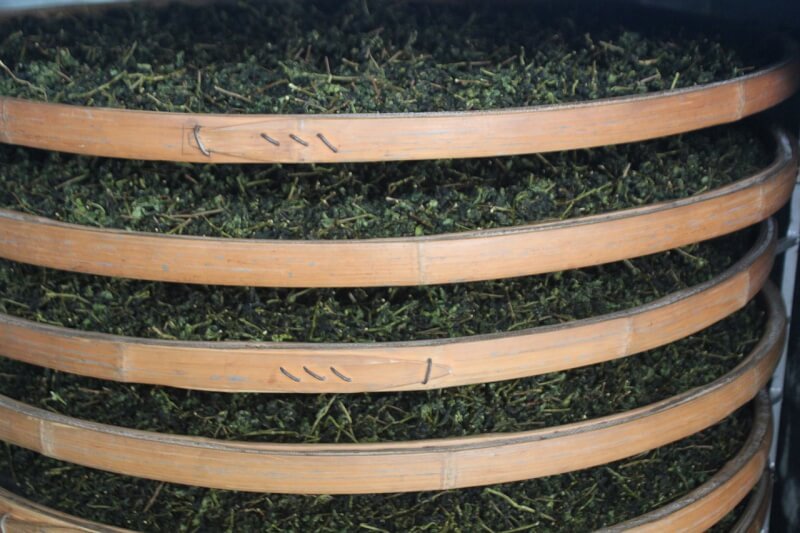
Tips for Properly Storing Loose Leaf Tea
Storing loose leaf tea requires some extra attention to ensure its freshness and flavor are maintained.
Choosing Quality Loose Leaf Tea
Start with high-quality loose leaf tea for optimal storage and brewing. Look for tea leaves that are whole and intact, free from dust and fannings. Quality loose leaf tea retains its flavors and aromas better than broken or powdered tea.
Properly Sealing Loose Leaf Tea Bags
If storing loose leaf tea in bags, ensure they are properly sealed to prevent air and moisture from entering. Use resealable bags or clips to tightly seal the bags after each use. This will help maintain the tea’s freshness and prevent it from absorbing external odors.
Using Canisters or Tins for Loose Leaf Tea
For long-term storage, consider using canisters or tins specifically designed for loose leaf tea. These containers provide excellent protection against air, light, and moisture. Choose canisters or tins made of non-porous materials such as glass or metal to preserve the tea’s quality.
Storing Tea Bags for Optimal Tea Quality
If you prefer using tea bags, there are a few storage tips to keep in mind.
Properly Sealing the Tea Bag
Ensure that tea bags are properly sealed after each use to maintain freshness. Fold or twist the tea bag’s top and store it in an airtight container or bag. This will help keep the tea bags fresh and prevent them from absorbing odors from their surroundings.
Using Individual Packaging for Tea Bags
If possible, store individual tea bags in their original packaging. The packaging provides an extra layer of protection and helps keep the tea bags fresh. Place the individual packages in an airtight container or bag for added freshness.
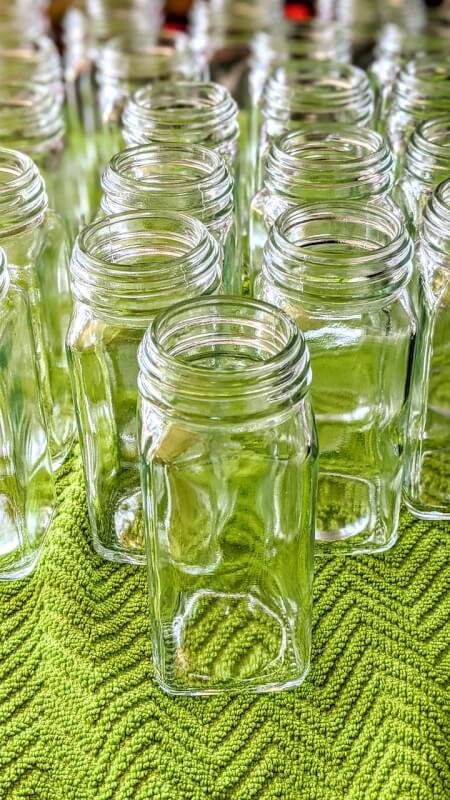
Long-Term Storage Options for Tea
If you need to store tea for an extended period, consider these long-term storage options.
Freezing Tea
Freezing tea can help preserve its freshness and flavors for an extended period. Divide the tea into small, airtight containers or bags and store them in the freezer. When you’re ready to use the tea, allow it to thaw completely before opening the container to prevent any condensation from affecting the tea’s quality.
Vacuum Sealing Tea
Vacuum sealing is another effective method for long-term tea storage. Remove the air from the bags or containers using a vacuum sealer. This helps to prevent oxidation and keeps the tea fresh for a longer period. Vacuum-sealed tea should be stored in a cool and dark place.
Avoiding Common Mistakes in Tea Storage
To ensure that your tea stays fresh and flavorful, it’s important to avoid common mistakes in tea storage.
Storing Tea near Strong Odors
Tea readily absorbs odors, so it’s vital to keep it away from strong-smelling substances. Avoid storing tea near spices, herbs, coffee, or any other items with strong aromas that could affect the tea’s flavors. Dedicated tea storage areas or containers can help minimize odor transfer.
Exposing Tea to Air
Air exposure can cause tea to become stale and lose its flavors. Always store tea in airtight containers or bags to prevent air from compromising the quality. Additionally, minimize the amount of time the tea container is open to avoid unnecessary air contact.
Storing Tea in the Fridge
While it may seem tempting to store tea in the refrigerator, it is not recommended. The fridge can introduce moisture and odors that can negatively affect the tea’s quality. Opt for a cool and dry storage space instead.
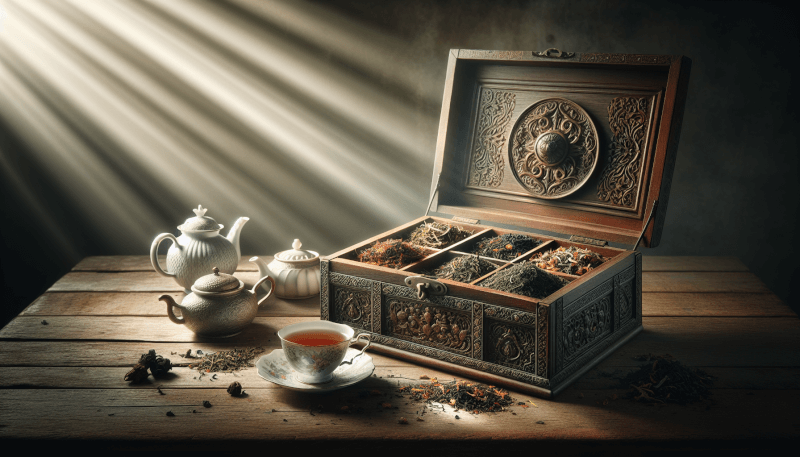
Assessing Tea Quality and Shelf Life
To determine the quality and shelf life of tea, it is essential to consider the following indicators.
Indications of Bad Tea Quality
Different types of tea may have specific signs of deterioration. Look for changes in color, such as darkening or discoloration, and any unusual odors. Mold or moisture presence is also a clear indication of tea going bad. If in doubt, it’s best to discard the tea and purchase fresh supplies.
Determining Tea Shelf Life
The shelf life of tea depends on its type and storage conditions. Generally, tea is best consumed within two years of its production date. However, some teas, like pu-erh and aged teas, can continue to improve in flavor and complexity over time. Always refer to the manufacturer’s recommendations for the specific tea you are storing.
Conclusion
Properly storing tea is essential to maintain its quality, flavors, and aroma. By understanding the impact of storage on tea and following the proper guidelines, you can enjoy the exceptional taste of a well-preserved cup of tea. Remember to consider the specific storage requirements of each type of tea and take the necessary precautions to store it in the ideal conditions. With proper storage techniques, you can savor the full beauty and flavors of tea with each brew.
